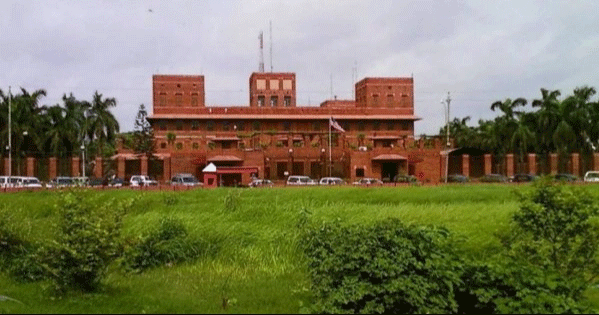Fresh health sector investments need govt incentives
Indian investors are eager to invest in Bangladesh with the aim to bring a development in the health sector to curb ongoing corona pandemic
Golam Mostafa Jibon: Though, the incumbent government has given highest priority to the health sector in the budget for Fiscal Year 2021-22 with a view to curb the ongoing corona pandemic, experts seem that there is needed more incentives to develop the sector and make it time befitting.
Meanwhile, many rich countries have shown interest to invest huge amount of money in the country’s health sector for its development. But, there is no required response from the government of Bangladesh in which the most important sector has now reached at dire straits during the corona pandemic.
Major General (rtd) Dilawar Singh, Senior Vice-President of Global Economist Forum, a United Nations general consultant member organization, in New Dilhi of India said, “Indian investors are eager to invest in Bangladesh with the aim to bring a development in the health sector to curb ongoing corona pandemic. If the Bangladesh government wants, we will be able to provide huge amount of investment for the Bangladesh health sector.”
“In this context, Bangladesh government needs cooperation to move forward as many other rich countries in the world like India are now eager to invest in Bangladesh for improvement of health sector,” he added.
Sources said, despite some achievements in the health sector and progress in some indicators, the people of Bangladesh are not satisfied with the healthcare services. There are many reasons for dissatisfactory. Of them, budget shortfalls for each year, huge mismanagement, poor infrastructural development, efficient manpower crisis, inefficiency, corruptions, malpractices, degradation of education and weaknesses and limitations of research are significant.
According to a report by the World Health Organization, the global health sector currently accounts for 10 percent of GDP. Of this, 35 percent comes from individual pockets and 51 percent is given by the government, while the rest is spent from other sources.
Every year, about 100 million people in the world become extremely poor to meet the healthcare costs. There are three types of successful healthcare systems in the world. Bangladesh is not in any of these criteria; in addition, it is in a mess condition. Therefore, the people living below the poverty line in the country are facing manifold problems while going to take treatment overseas.
The ‘Health Finance Strategy Paper’ prepared in 2012 by the Health Economics Unit of the Ministry of Health and Family Welfare stated that, the per capita expenditure on healthcare in Bangladesh will be reduced to 32 percent by 2030. At the time of drafting the strategy, 64 percent of the health expenditure was borne by the individual, 26 percent by the government and the remaining 10 percent by other sources. But, it is being noticed with great sadness that, the health sector had been consistently neglected in the national budget, government policies and plans for a long time.
On the other hand, in the name of free market economy, private participation and control in medical services and education is increasing rapidly and uncontrollably. So, medical services have turned into products. Instead of decreasing, the health expenditure of the individual has increased to 67 percent in 2017 and 72 percent in 2019. The health report of 2017 shows that among the SAARC countries, per capita pocket expenditure is 18 percent in Maldives, 25 percent in Bhutan, 42 percent in Sri Lanka, 47 percent in Nepal, 56 percent in Pakistan and 62 percent in India.
As a result, about 6 million people in this country go below the poverty line every year to meet the cost of health. The number has now increased due the corona pandemic, experts added.
According to the United Nations, sustainable development requires strengthening the health sector, allocating adequate budgets and ensuring primary health care in order to ensure ‘universal health’.
As per the estimates of the World Bank and the World Health Organization in 2015, the per capita expenditure in the health sector in Bangladesh is only $32 per year. At the same time, Pakistan spent $38, Nepal $45, India $59, Bhutan $91 and Sri Lanka $151.
An analysis of the budget of the last one and a half decades shows that the health sector has always been a victim of neglect. During this long period, the allocation to the health sector has been limited to 4.2 to 6.8 (average 5.5) percent of the total national budget and has always been below 1 percent of GDP.
The government did not increase the allocation to the health sector with proper importance earlier. As a result, Bangladesh is lagging behind in context of the government expenditure on healthcare sector.
In 2015, the share of GDP in the health sector was 2.37 percent in Bangladesh, 3.45 percent in Bhutan, 3.66 percent in India, 6.29 percent in Nepal and 10.8 percent in the Maldives.
At that time, on an average the share of GDP was 9.88 percent globally, said World Bank Data-2019.
According to the World Health Organization (WHO), the total allocation for health in the national budget should be 15 percent and at least 5 percent of GDP.
So, it is clear that Bangladesh spends the least amount in the health sector among the South Asian countries. It faces manifold problems including small allocation, unlimited corruption, mismanagement of funds and limitations in necessary cases. The government allocations for health sector should be considered as investments, not as expenditures; It reduces poverty, increases jobs and economic growth. Development of health sector may help to build a healthy, strong and ethical society.
The manpower crisis in the health sector in the country is also a major obstacle in providing quality healthcare. For every 10,000 people in Bangladesh, there are 3.8 doctors and 1.07 nurses.
According to the WHO, in a country like Bangladesh, there should be 23 doctors, nurses and midwives for every 10,000 people to provide quality healthcare. But, there are only 8.3 persons in Bangladesh.
On the other hand, there are 18.5 in India, 19.3 in Bhutan, 28 in Thailand, 33.5 in Nepal, 36.8 in Sri Lanka and 118 in the Maldives.
There should be 3 nurses and 5 health workers with one doctor. But Bangladesh has only 0.3 nurses and 0.6 health workers. Despite this small manpower, 27.27 percent posts were vacant in 2019 (HRH Data Sheet 2019; HRM Unit, Ministry of Health and Family Welfare).
In this circumstance, the government should pay special attention to foreign investors to develop the country’s health sector during the deadly clutch of corona pandemic, experts opined.
President Joe Biden tests positive for COVID-19 while campaigning in Las Vegas, has ‘mild symptoms’
International Desk: President Joe Biden tested positive for COVID-19 while traveling Wedne…







